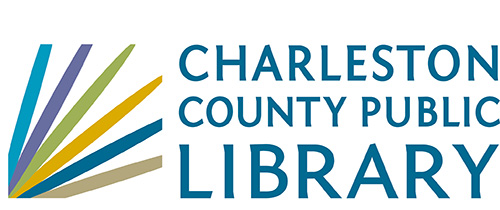Menu
×
Folly Beach Library
Closed
Phone: (843) 588-2001
Edgar Allan Poe/Sullivan's Island Library
Closed for renovations
Phone: (843) 883-3914
West Ashley Library
9 a.m. – 7 p.m.
Phone: (843) 766-6635
Wando Mount Pleasant Library
9 a.m. – 8 p.m.
Phone: (843) 805-6888
Village Library
9 a.m. – 6 p.m.
Phone: (843) 884-9741
St. Paul's/Hollywood Library
9 a.m. – 8 p.m.
Phone: (843) 889-3300
Otranto Road Library
9 a.m. – 8 p.m.
Phone: (843) 572-4094
Mt. Pleasant Library
9 a.m. – 8 p.m.
Phone: (843) 849-6161
McClellanville Library
9 a.m. - 6 p.m.
Phone: (843) 887-3699
Keith Summey North Charleston Library
9 a.m. – 8 p.m.
Phone: (843) 744-2489
John's Island Library
9 a.m. – 8 p.m.
Phone: (843) 559-1945
Hurd/St. Andrews Library
9 a.m. – 8 p.m.
Phone: (843) 766-2546
Miss Jane's Building (Edisto Library Temporary Location)
9 a.m. – 6 p.m.
Phone: (843) 869-2355
Dorchester Road Library
9 a.m. – 8 p.m.
Phone: (843) 552-6466
John L. Dart Library
9 a.m. – 7 p.m.
Phone: (843) 722-7550
Baxter-Patrick James Island
9 a.m. – 8 p.m.
Phone: (843) 795-6679
Main Library
9 a.m. – 8 p.m.
Phone: (843) 805-6930
Bees Ferry West Ashley Library
9 a.m. – 8 p.m.
Phone: (843) 805-6892
Mobile Library
9 a.m. - 5 p.m.
Phone: (843) 805-6909
Today's Hours
Folly Beach Library
Closed
Phone: (843) 588-2001
Edgar Allan Poe/Sullivan's Island Library
Closed for renovations
Phone: (843) 883-3914
West Ashley Library
9 a.m. – 7 p.m.
Phone: (843) 766-6635
Wando Mount Pleasant Library
9 a.m. – 8 p.m.
Phone: (843) 805-6888
Village Library
9 a.m. – 6 p.m.
Phone: (843) 884-9741
St. Paul's/Hollywood Library
9 a.m. – 8 p.m.
Phone: (843) 889-3300
Otranto Road Library
9 a.m. – 8 p.m.
Phone: (843) 572-4094
Mt. Pleasant Library
9 a.m. – 8 p.m.
Phone: (843) 849-6161
McClellanville Library
9 a.m. - 6 p.m.
Phone: (843) 887-3699
Keith Summey North Charleston Library
9 a.m. – 8 p.m.
Phone: (843) 744-2489
John's Island Library
9 a.m. – 8 p.m.
Phone: (843) 559-1945
Hurd/St. Andrews Library
9 a.m. – 8 p.m.
Phone: (843) 766-2546
Miss Jane's Building (Edisto Library Temporary Location)
9 a.m. – 6 p.m.
Phone: (843) 869-2355
Dorchester Road Library
9 a.m. – 8 p.m.
Phone: (843) 552-6466
John L. Dart Library
9 a.m. – 7 p.m.
Phone: (843) 722-7550
Baxter-Patrick James Island
9 a.m. – 8 p.m.
Phone: (843) 795-6679
Main Library
9 a.m. – 8 p.m.
Phone: (843) 805-6930
Bees Ferry West Ashley Library
9 a.m. – 8 p.m.
Phone: (843) 805-6892
Mobile Library
9 a.m. - 5 p.m.
Phone: (843) 805-6909
Patron Login
menu
Item request has been placed!
×
Item request cannot be made.
×
 Processing Request
Processing Request
Primary sinonasal chondroid chordoma in a pediatric patient: a diagnostic challenge.
Item request has been placed!
×
Item request cannot be made.
×
 Processing Request
Processing Request
- Author(s): Mann, Prachi; Arya, Ayush; Disawal, Amit; Anand, Aarti
- Source:
Egyptian Journal of Radiology & Nuclear Medicine; 6/7/2024, Vol. 55 Issue 1, p1-9, 9p- Subject Terms:
MORTALITY prevention; FACIAL injuries; TUMORS in children; DIFFERENTIAL diagnosis; RADIOTHERAPY; COMPUTED tomography; RARE diseases; RESPIRATORY obstructions; MAGNETIC resonance imaging; CYTOCHEMISTRY; NOSE; IMMUNOHISTOCHEMISTRY; SNORING; RHABDOMYOSARCOMA; NASOPHARYNX cancer; DISEASE relapse; GERM cell tumors - Source:
- Additional Information
- Subject Terms:
- Abstract: Background: Chordomas are rare, malignant tumors typically centered in midline structures such as the clivus and sacrum, with peak prevalence in the fourth decade. Clival chordomas may secondarily extend to involve the nasopharynx and nasal cavity; however, primary extra-osseous chordomas are even more uncommon. We present an unusual case of a primary sinonasal chondroid chordoma arising from the maxillary sinus in a 5-year-old child. This is the second case of primary sinonasal chordoma reported in the literature so far, after Tao ZZ et al. and the first case of the chondroid variant. Case presentation: A 5-year-old male presented with right-sided nasal obstruction, nasal congestion, and snoring for 2 months. Physical examination showed a reddish polypoidal mass in the right nasal cavity obstructing the choana with nasal septal deviation toward left side. Radiological examination with CT confirmed the presence of a well-defined, heterogeneously hyperdense lobulated mass in right maxillary sinus extending into right nasal cavity with intralesional coarse calcifications. MRI revealed expansile solid altered signal intensity mass, which appears to be isointense on T1-weighted imaging (T1WI) and heterogeneously hyperintense on T2-weighted imaging (T2WI) with a heterogeneous honeycomb pattern of enhancement. Differentials considered were rhabdomyosarcoma, nasopharyngeal carcinoma, and neuroblastoma metastasis. However, the lesion was pathologically proven as a chondroid chordoma. No association with skull base or clival lesion was found on review. Conclusions: Primary sinonasal chordomas are rare in occurrence but should be considered a differential for sinonasal masses in the presence of characteristic MRI features, despite their uncommon location. [ABSTRACT FROM AUTHOR]
- Abstract: Copyright of Egyptian Journal of Radiology & Nuclear Medicine is the property of Springer Nature and its content may not be copied or emailed to multiple sites or posted to a listserv without the copyright holder's express written permission. However, users may print, download, or email articles for individual use. This abstract may be abridged. No warranty is given about the accuracy of the copy. Users should refer to the original published version of the material for the full abstract. (Copyright applies to all Abstracts.)
Contact CCPL
Copyright 2022 Charleston County Public Library Powered By EBSCO Stacks 3.3.0 [350.3] | Staff Login


No Comments.